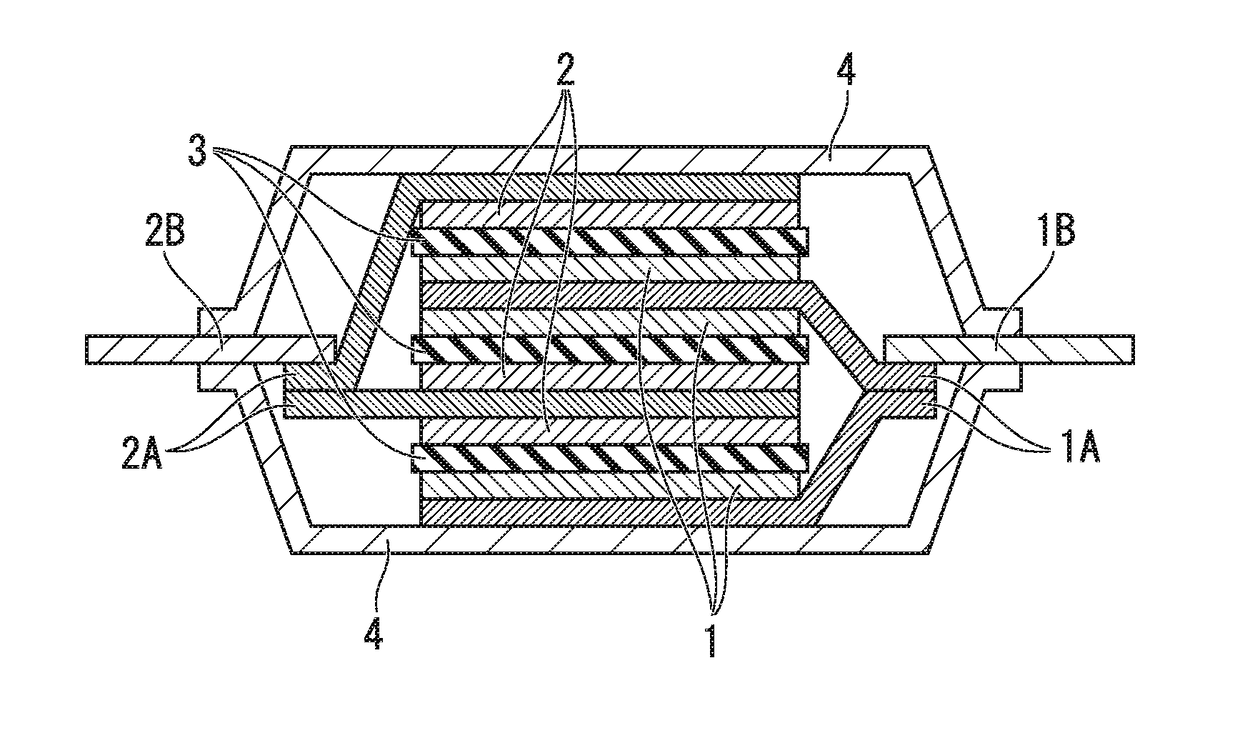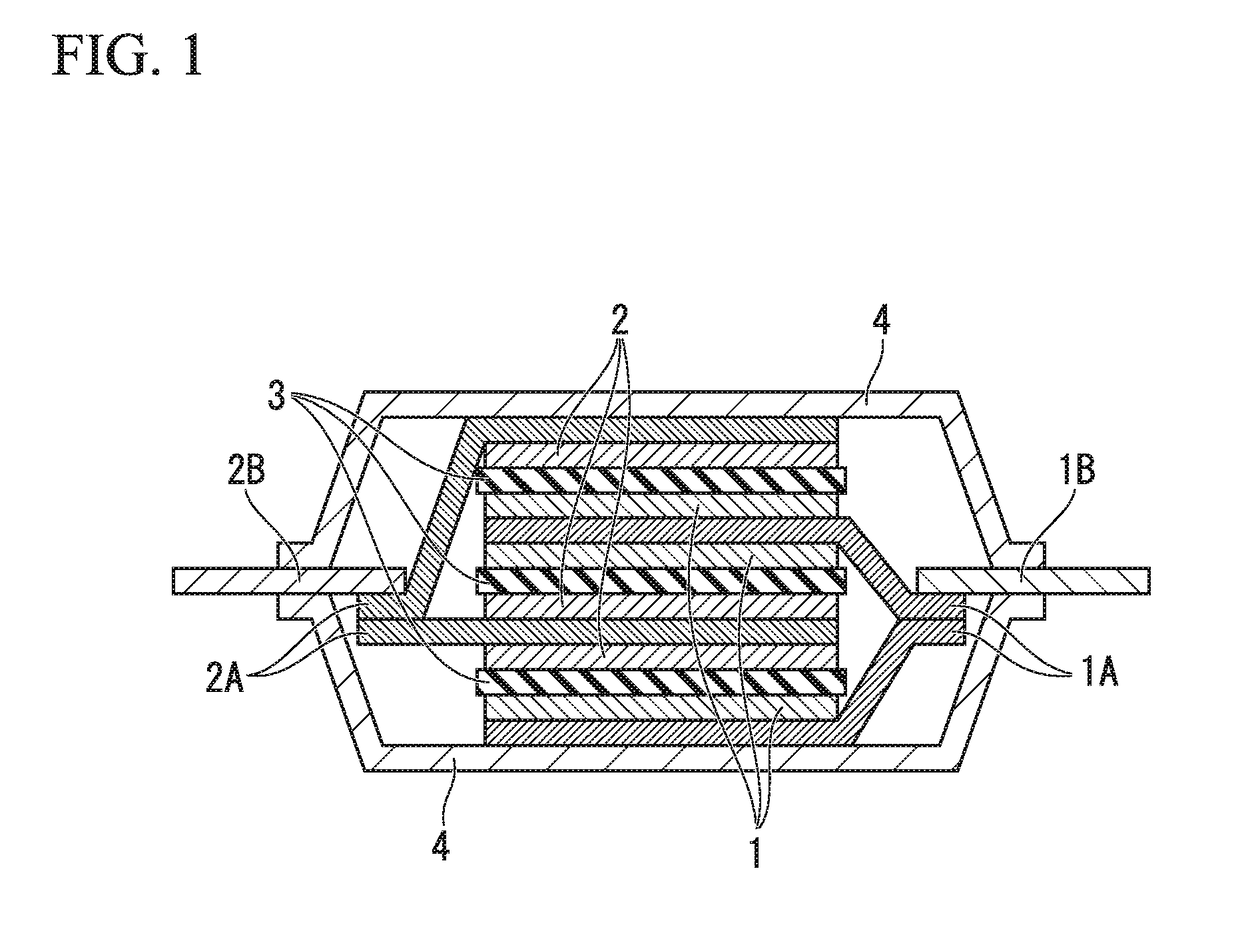Electrolyte solution and lithium ion secondary battery
a lithium-ion secondary battery and electrolytic liquid technology, applied in secondary cell servicing/maintenance, capacitors, electrochemical generators, etc., can solve problems such as lowering battery performance, and achieve the effect of reducing battery capacity and suppressing the capacity decrease of lithium-ion secondary batteries
- Summary
- Abstract
- Description
- Claims
- Application Information
AI Technical Summary
Benefits of technology
Problems solved by technology
Method used
Image
Examples
example 1
[0106]A laminate lithium-ion secondary battery having a structure as shown in FIG. 1 was manufactured.
[0107]A slurry containing 69% by mass of SiO having an average particle size of 1 μm, 15% by mass of polyamic acid, 10% by mass of acetylene black, and 6% by mass of carbon nanotube was coated on an anode current collector 2A formed of a copper foil having a thickness of 15 μm, followed by drying, to produce an anode 2 having a thickness of 25 μm. The produced anode was annealed in argon atmosphere at 300° C. for 2 hours, to thereby cure the polyamic acid.
[0108]A slurry containing 90% by mass of a ternary cathode material LiNi0.33Mn0.33Co0.33O2 as the cathode active material, 5% by mass of Ketjen black as an electroconductive auxiliary material, and 5% by mass of polyvinylidene fluoride as a binder was coated on a cathode current collector 1A (thickness: 10 μm) formed of an aluminum foil, to thereby form a coating, which was then dried to prepare a cathodes 1 having a thickness of 5...
example 2
[0112]A lithium-ion secondary battery according to the present invention was prepared in the same manner as in Example 1, except that a solvent including ethylene carbonate (EC) and diethyl carbonate (DEC) as nonaqueous solvents, and 1,1,2,3,3,3-hexafluoropropyl difluoromethyl ether as an additive, which were present at a volume ratio of 27:68:5, was used as the solvent (A).
example 31
[0113]A lithium-ion secondary battery according to the present invention was prepared in the same manner as in Example 1, except that a solvent including ethylene carbonate (EC) and diethyl carbonate (DEC) as nonaqueous solvents, and 2,2-difluoroethyl ethyl carbonate as an additive, which were present at a volume ratio of 36:32:32, was used as the solvent (A).
PUM
 Login to View More
Login to View More Abstract
Description
Claims
Application Information
 Login to View More
Login to View More - R&D
- Intellectual Property
- Life Sciences
- Materials
- Tech Scout
- Unparalleled Data Quality
- Higher Quality Content
- 60% Fewer Hallucinations
Browse by: Latest US Patents, China's latest patents, Technical Efficacy Thesaurus, Application Domain, Technology Topic, Popular Technical Reports.
© 2025 PatSnap. All rights reserved.Legal|Privacy policy|Modern Slavery Act Transparency Statement|Sitemap|About US| Contact US: help@patsnap.com



